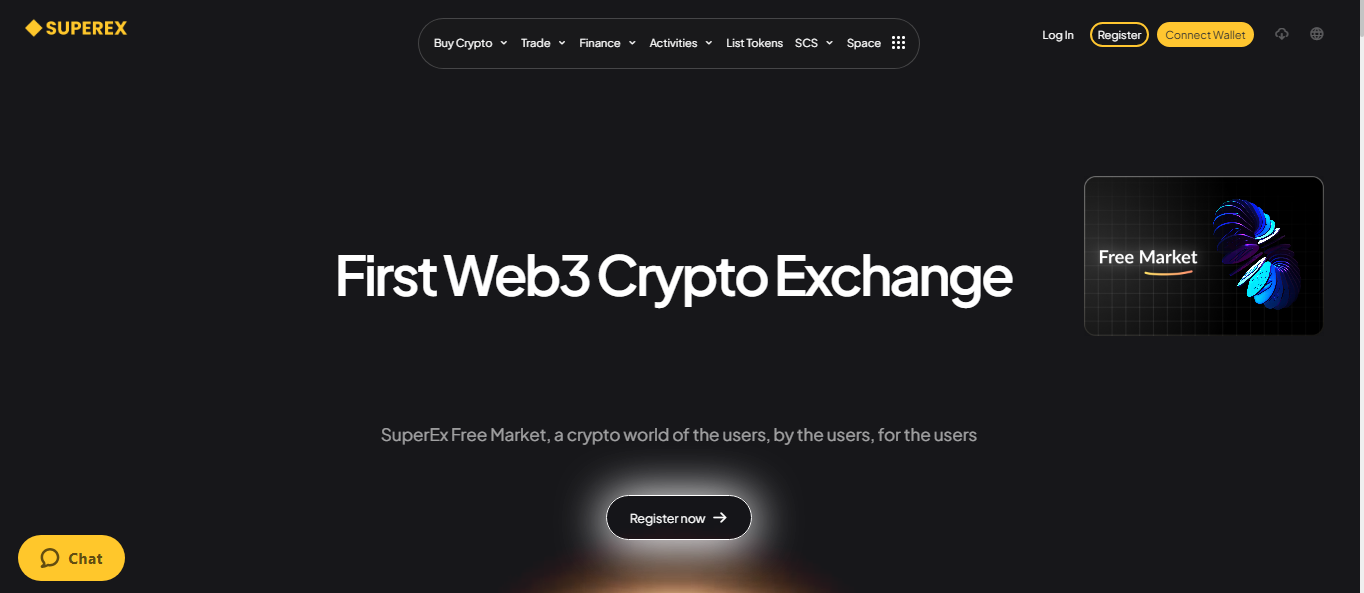SuperEx review - what’s clear, what’s assumed, and where it stands today

SuperEx describes itself as a trading environment designed for both experienced crypto traders and newer entrants who want quick access to a wide set of digital assets. The first glance at their marketing shows a lineup filled with spot pairs, futures options, and flashy community reward events. But once you look past the banners, the big question becomes: how much is actually verifiable?
That’s the part that still forces many to rely on cautious personal testing. The platform feels modern and slick, with interfaces that mimic established exchanges, but finding formal numbers - like consistent daily liquidity, reserve attestations, or external custody audits - isn’t straightforward.
How the trading space is laid out
SuperEx seems to split its core into two big functional zones. One is the traditional spot market, which lists dozens of tokens that go beyond just Bitcoin and Ethereum, adding newer altcoins that might not be available on every competitor. The second zone is its futures area, where traders can pick from contracts with varying leverage and margin requirements.
Still, there’s no unified published document that outlines exactly what leverage ceilings are enforced across all contracts or how the platform automatically handles liquidation events. Instead, most of these parameters emerge only at the actual order stage, inside the trading terminal. For users wanting to plan risk precisely, that means running small live positions is often the only real way to uncover platform behavior.
Fees, rewards, and what’s buried behind the interface
One of SuperEx’s loudest marketing points is its rotating bonus schemes. New users might see promotional offers for initial deposits, trading competitions, or referral rewards. However, these typically change from month to month, without a static table showing baseline fees for makers, takers, or withdrawals.
This is common enough across newer exchanges chasing user sign-ups, but it does shift the discovery burden onto traders. If you’re trying to figure out your long-term costs - especially for frequent or high-volume trades - you’ll likely have to execute several operations, then review the logs and settlement lines to see what quietly deducted along the way.
At the same time, there’s no public repository of fee schedules or transparent explanations of how withdrawal fees adapt to chain congestion or internal liquidity needs. For some this isn’t a deal-breaker, but it highlights why so many start by pushing small test transactions to see what really happens.
Table of current known elements and major unknowns
Looking at this table, it becomes obvious that while SuperEx tries to stand out with user-facing campaigns and colorful listings, it’s far less open on the internal structure that backs those operations.
What this means for handling custody and platform trust
Perhaps the largest open question is around where user assets actually reside. Some exchanges publicly declare what share of deposits sits in offline cold wallets versus operational hot environments. They might even show multi-sig thresholds or provide downloadable cryptographic proofs of reserves. In SuperEx’s case, none of that is visibly offered.
So traders end up shouldering the usual crypto mantra: not your keys, not your coins - or at least approach with a tiered strategy. It’s typical to see people keep only active trading balances on platforms like this, sweeping larger holdings to self-managed wallets until more robust disclosures appear.
It’s also notable that there’s no mention of external penetration testing results or regular vulnerability assessments by independent security firms. That’s not unique - many emerging platforms skip this - but it reinforces why cautious scaling matters.
How most approach trading here in practice
For many who give SuperEx a try, the process looks almost ritualistic. Start with a modest deposit of a widely supported token - often USDT, BTC, or ETH - run a few small trades in both spot and futures to watch execution speed, then trigger a withdrawal. Watching how long it takes for funds to arrive back into a private wallet, along with comparing the net amount to initial records, becomes the closest stand-in for formal assurances.
If all goes well, some users gradually increase their participation, layering into different altcoins or exploring leverage with tighter stop placements. Others keep it strictly compartmentalized - using SuperEx to chase specific altcoin opportunities while continuing to rely on more established platforms for core portfolio anchors.
At this stage, SuperEx is representative of many younger crypto exchanges. It pushes marketing energy into altcoin diversity and loyalty programs but stops short of providing deep operational transparency. Without cold wallet ratios, external audits, or a fixed fee ledger, trust has to be built one small experiment at a time.
That doesn’t make it inherently unsafe - but it does mean the responsibility shifts entirely to each trader to verify what matters to them. From tiny trial deposits to multiple staged withdrawals, personal diligence becomes the stand-in for the regulatory or financial frameworks that traditional markets take for granted.
Why slow steps still make the most sense
At this stage, SuperEx is representative of many younger crypto exchanges. It pushes marketing energy into altcoin diversity and loyalty programs but stops short of providing deep operational transparency. Without cold wallet ratios, external audits, or a fixed fee ledger, trust has to be built one small experiment at a time.
That doesn’t make it inherently unsafe - but it does mean the responsibility shifts entirely to each trader to verify what matters to them. From tiny trial deposits to multiple staged withdrawals, personal diligence becomes the stand-in for the regulatory or financial frameworks that traditional markets take for granted.
Disclaimer
“This content is for informational purposes only and does not constitute financial advice. Please do your own research before investing.”
.png)







%203.svg)
%203.svg)




















